This article was co-authored by Pippa Elliott, MRCVS. Dr. Elliott, BVMS, MRCVS is a veterinarian with over 30 years of experience in veterinary surgery and companion animal practice. She graduated from the University of Glasgow in 1987 with a degree in veterinary medicine and surgery. She has worked at the same animal clinic in her hometown for over 20 years.
wikiHow marks an article as reader-approved once it receives enough positive feedback. In this case, 88% of readers who voted found the article helpful, earning it our reader-approved status.
This article has been viewed 511,429 times.
All mice look pretty similar, so you might not know if you have a male or female. The process of determining sex is called sexing. There are two main methods of determining sex; both require a keen eye and gentle handling of mice. You can sex mice by looking at the anogenital distance, which is the distance between the mouse's genital area and anus. Another method for sexing young mice is to check to see if the nipples are visible. It's always best to know the sex of your mice so you can separate the males from the females and prevent unwanted pregnancies.
Steps
Examining the Genital Area
-
1Use 2 hands to gently lift the mouse. Place your hands together to form a cup, and use both hands to scoop up the mouse. For bigger mice, you can lift them by placing 1 hand under the chest and using the other hand to support the hind legs.[1]
- Remember you are much bigger than the mouse and an untrained mouse will be frightened of you. Be gentle and calm when interacting with mice.
- Alternatively, you can train your mouse to crawl into your hand. Use treats to coax them into your palm. However, if this is your first time, it may take a while before your mouse trusts you enough to eat off of your hand.
-
2Place the mouse on its back to view its genital area. Take the mouse by the scruff of its neck and turn it on its back. If it doesn't seem comfortable, hold the mouse in your hand with its rear end facing you. Lift the base of the tail so that you can clearly see the genitals.[2]
- It's important to lift the mouse at the base of its tail and never to have all of its feet in the air. Have at least the mouse's two front legs touching a surface, such as a cage or your hand. If you hold the mouse by its tail and let it hang, you risk the chance of breaking its tail or even snapping its back. You don't want to harm the mouse or cause it any pain.
- Pinkies, or newborn mice, can get cold very fast. Only handle them for brief periods of time. They are also extremely fragile so avoid lifting them by the tail.
Advertisement -
3Look at the distances between the anus and the genitalia. The anus is the opening directly under the tail. Depending on the age of the mouse, it can be quite obvious or too difficult to sex. Young mice, especially newborn pinkies that have no fur, are very difficult to sex and the anogenital distances between sexes can almost look the same, so don't feel silly if you sex them incorrectly. It just takes some practice![3]
- It is helpful to compare multiple mice of the same age side-by-side until you are able to see a difference in distances.
-
4Determine the sex based on distance. A female mouse has a genital area that is much closer to the anus. The vagina is usually within about 1⁄4 inch (0.6 cm) on an adult mouse. Females have a vaginal orifice behind the urethra which may appear to look like a bump.[4]
- A male mouse has a genital area much farther away from the anus than a female mouse.
- You can also look for testicles when you do this. Although mouse testicles are not as prominent as a dog’s, they do still appear as 2 elongated swellings in the groin region. The testicles will appear large in comparison to the mouse’s body, but the mouse may also draw them up during times of stress.
Looking for Identifying Features
-
1Look for prominent nipples to identify a female. Young female mice have nipples that are much more prominent than the nipples of a male. Position the mouse on its back to view its stomach. To do this, take the mouse by the scruff of its neck, and turn the mouse on its back in your hand. Nipples may be obscured by the fur on the mouse's stomach. Try to part the fur or feel the belly to see if you can spot the nipples. They may look like bald spots if the mouse is young.[5]
- It can be difficult to spot nipples on pinkies but with good lighting and an observant eye, you can spot nipples as early as three days after birth.
- Be aware that male mice lack nipples entirely, so this is a good way to identify whether a mouse is male, too.[6]
-
2Spot signs of pregnancy to identify an older female. Pregnancy is usually an easy visual determination of sex, as the nipples will swell and drop, forming "saddlebags" around the hip area. However, not all mice will be as obvious, and for some, obese males may look just like pregnant females.[7]
- The nipples may also take on a pink, rosy appearance when a mouse is pregnant. This is known as “pinking up” and it is a common sign of pregnancy, but it can be hard to spot.
-
3Look for small bumps near the scrotum to identify a male. Adult male mice have testicles that are pretty easy to see most of the time. However, you may have to be patient in order to get a look, because a male mouse can withdraw his testicles into his body. One way to get a good look is to wait for the mouse to eat while 'standing' on the rim of its food bowl. Most of the time his testicles will descend during this position. They look like small balls or pillows and are near the scrotum.[8]
- You could also try placing the mouse on a sheet of glass or in a glass cage. Offer the mouse some treats to keep it still and check for its testicles from the under the glass.
Expert Q&A
Did you know you can get expert answers for this article?
Unlock expert answers by supporting wikiHow
-
QuestionDo mice feel safe in their owner's hand?
 Pippa Elliott, MRCVSDr. Elliott, BVMS, MRCVS is a veterinarian with over 30 years of experience in veterinary surgery and companion animal practice. She graduated from the University of Glasgow in 1987 with a degree in veterinary medicine and surgery. She has worked at the same animal clinic in her hometown for over 20 years.
Pippa Elliott, MRCVSDr. Elliott, BVMS, MRCVS is a veterinarian with over 30 years of experience in veterinary surgery and companion animal practice. She graduated from the University of Glasgow in 1987 with a degree in veterinary medicine and surgery. She has worked at the same animal clinic in her hometown for over 20 years.
Veterinarian
-
QuestionCan I use evaporated milk to feed baby mice?
 Pippa Elliott, MRCVSDr. Elliott, BVMS, MRCVS is a veterinarian with over 30 years of experience in veterinary surgery and companion animal practice. She graduated from the University of Glasgow in 1987 with a degree in veterinary medicine and surgery. She has worked at the same animal clinic in her hometown for over 20 years.
Pippa Elliott, MRCVSDr. Elliott, BVMS, MRCVS is a veterinarian with over 30 years of experience in veterinary surgery and companion animal practice. She graduated from the University of Glasgow in 1987 with a degree in veterinary medicine and surgery. She has worked at the same animal clinic in her hometown for over 20 years.
Veterinarian
References
- ↑ https://www.pdsa.org.uk/taking-care-of-your-pet/looking-after-your-pet/small-pets/how-to-hold-a-mouse-safely
- ↑ http://ko.cwru.edu/info/musfrming.html
- ↑ https://www.ais.sa.edu.au/wp-content/uploads/Pages/Animal_Ethics/SOP-05-Mice-April-2020.pdf
- ↑ http://zenmousery.com.au/sexing-baby-mice/
- ↑ http://ko.cwru.edu/info/musfrming.html
- ↑ https://www.ncbi.nlm.nih.gov/pubmed/3227089
- ↑ https://animals.mom.me/can-tell-female-mouse-pregnant-9869.html
- ↑ https://www.ais.sa.edu.au/wp-content/uploads/Pages/Animal_Ethics/SOP-05-Mice-April-2020.pdf
About This Article
While it can be hard to tell if a mouse is male or female at a glance, you can usually spot the difference by examining the mouse’s genital area. Gently scoop up the mouse in both hands, then hold it by the scruff and turn it over so it’s on its back with its rear end facing you. Carefully move the mouse’s tail out of the way so you can see its genital area. If the mouse’s genitals are about 1/4 of an inch away from its anus, the mouse is probably a female. If the genitals are much farther away from the anus, or you can see descended testicles, the mouse is a male. Also, female mice have nipples, and male mice do not. For more advice from our Veterinary co-author, like how to identify a pregnant female mouse, read on!
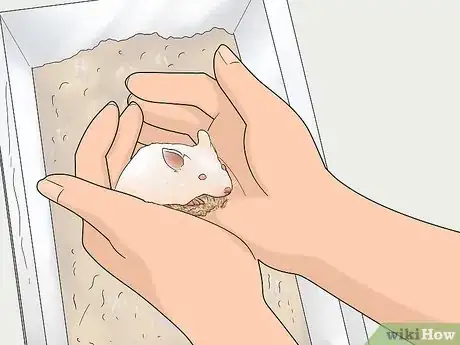
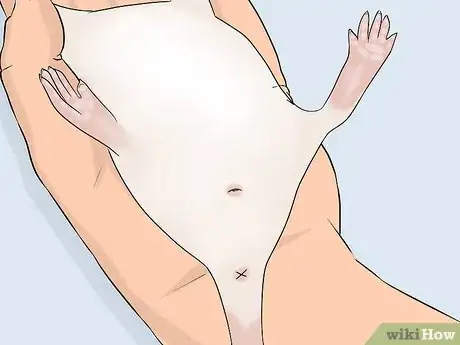
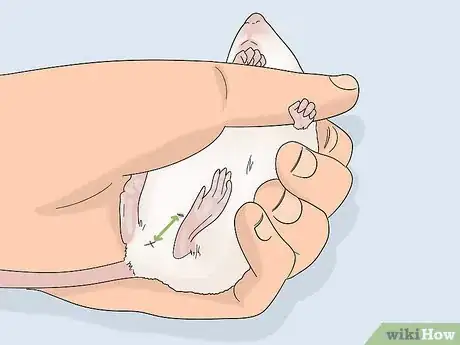

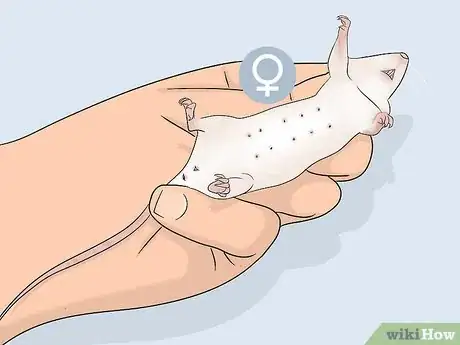
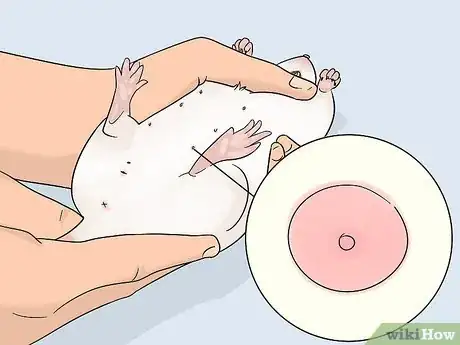
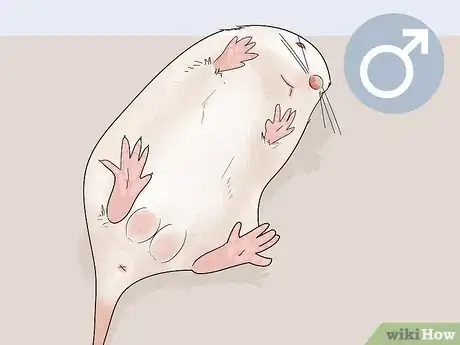


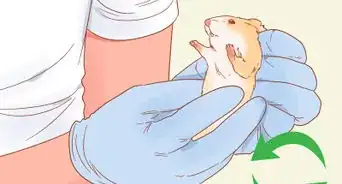
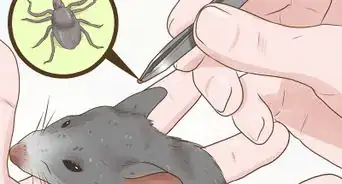

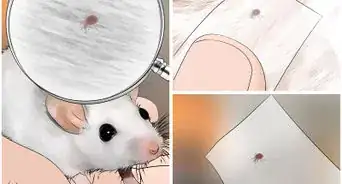

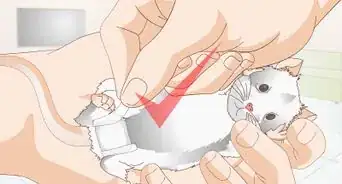














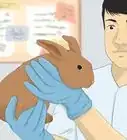
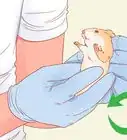
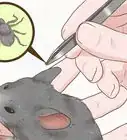



































Medical Disclaimer
The content of this article is not intended to be a substitute for professional medical advice, examination, diagnosis, or treatment. You should always contact your doctor or other qualified healthcare professional before starting, changing, or stopping any kind of health treatment.
Read More...